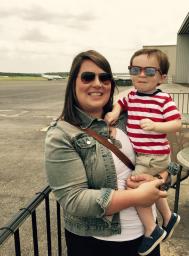Case
Politically or Racially-Aware
I believe in democracy. As a high school social sciences teacher, I strongly believe in democratic education and political awareness. I want my students to be aware of what is going on around them locally, nationally, and internationally. I require my students to keep up with news. Everything they learn from newspapers, magazines, and television becomes substance to use in my lessons. Before the presidential elections, I asked my students to watch all the debates, try to see the different perspectives, and how those perspectives may lead to different courses of action and to different implications for people. As part of this effort, I gave students a "persuasive writing" assignment. I gave them a list of topics from the debates, such as abortion, healthcare, affirmative action, and foreign policy. Students were to take a position on one of these issues and write a persuasive essay. When it was time for students to share their writings in class, things got out of hand. Every single topic we discussed along with the essays turned into a discussion of race. My Black and White students took opposite perspectives on every issue and during the discussions, they were not civil. I felt like my efforts for democratic education were not producing anything good. Should I change my activities? How come the political awareness I wanted develop in my students actually turned out to be racial awareness? Some guidance please!
Solution #1
I like that you added the requirement of being respectful of others and to not say things that could be offensive. Students can express their beliefs without being offensive if they go about it the right way.
I agree with limiting the amount of rebuttals the students can have. I would also limit the amount of racial comments the students make. I also think that we need to get to know our students and determine if they would be able to handle this type of situation.
I agree that we should try not to offend anyone during the assignment. Keeping the debate tasteful and not disrespecting anyone is the way to go.
Solution #2
Your provide a nice solution. Students should be provided with a time to reflect on the cultural differences that may arise before they actually occur in the classroom. Additionally, having students work in a small group, particularly if students aren't expecting a conflict similar to the conflict that was described in the situation.
Solution #3
I think you need to move your students out of their comfort zones, as well. Have students who are white take on the persona of a black candidate and vice versa to prove your point that elections can be divided in terms of race. Show them your expectations and also what to avoid. Painting the clearest picture possible is always the best way for students to gain full control.
Your idea to have them complete the activity in terms of another race is brilliant. This would make this assignment harder for them,but I feel like they would learn more. Also, they can learn how their feelings can affect current events with these activities.
I think this is a great idea! If you say from the beginning that they will be expressing their ideas as if they were in front of a large group of people in a position such as the president, I think students would be more likely to really think about what they saying.
I also think this activity would have gone better with different students. Teachers should get to know their students so that they can make sure they would be able to handle such a task.
Solution #4
Solution #5
Savanna, What you have described can be summed up as the students expressing their own cultural bias in the classroom. While we need to teach them that we all have our own opinions (and feel very strongly about them), we must teach them respect and tolerance; and, we can start by sharing our own experiences.
You are right. Discussing political issues is a touchy subject. I agree with you when you said students typically side with what they hear or what their parents believe in. Most of the time they do not have any "back up" for what they believe. In this case, making them "back up" their thoughts with evidence would be a great idea. Also, they should do so without making a race issue.
I agree that students many times blindly accept the opinions they hear as truth without given them much thought. It is important that we teach them to evaluate these opinions based on facts while at the same time considering the experiences they've had.
I agree that the students in the class should have their own opinions. The way the students represent their opinions need to be respectful. I think the teacher should allow the students to share their opinions, but definitely represent facts to back them up. Bringing race into a topic can hurt people's feelings and that is not being respectful. The teacher should also act as a mediator in the classroom and referee the topics in case they get out of hand.
I agree, and I think it is very important for students to form their own opinions, instead of simply siding with that of their parents. The sooner they learn to think for themselves and discuss their own opinions, the better they will become at reinforcing those opinions.
I think the students having to back up what they say is a great idea. They can repeat whatever their parents have to say to anyone, but being able to back it up is going to show whether or not they truly understand what they are talking about.
Solution #6
Solution #7
I agree that even though making students racially aware was not the goal it can still be used for a positive learning outcome in the classroom. I think that this is just a way to make students think more deeply about several different topics all at once.
Solution #8
Great solution! Behavior guidelines are important and this could have definitely helped the outcome of the lesson and writing assignment.
Solution #9
I agree that this could be turned into a deeper learning activity through a discussion of the origins and support of their various views and beliefs. Discuss why we all have different views about certain topics and how race can sometimes be an easy way to jump to conclusions about topics such as abortion. Talk about the deeper meanings and origins of your students views.
I agree with you both that this situation could be used to expand on the topic of racism. It would be completely necessary to set some discussion guidelines so that the conversation did not become negative or counter productive.
think you should flip it to your advantage. Don't change your activities because it causes a little controversy. Use that time to explore what causes your students to be so divided. Ask them why they think that when it comes to certain views they tend to be racially divided. Allow for open but respectful discussion. Students would love to share their thoughts I agree with you! I think the activity is great and shouldn't be changed.I would have never thought about discussing why the students feel so divided. I bet you would get a lot hearing more student thought.
I think using this to your advantage would also be a good thing. Let the students carry on with the conversations, but explain that they have to be respectful and listen to what others have to say. Put some rules in place and see where this goes. You may learn something new from your students perspectives that you may have never thought of.
Solution #10
Creating two anonymous candidate profiles that focus on the issues is a creative idea. However, if the students adhered to the assignment and watched the presidential debates and read newspaper and magazine articles about the candidates, they may have a good idea of who the anonymous candidates are.
I agree with the above comment that if your students had done the work you asked of them, it would be difficult to hide the identity of the candidate. Especially with the election of Barack Obama, I think it could be healthy to have an honest conversation about race in politics. Politicians use race all the time when it comes to breaking down elections and voters. Politicians know which racial, gender, and age groups care about which issues. Opening the eyes of students to this reality, and how politicians use this information to cater specific messages to specific groups, may help them to become more informed voters.
I love the idea of presenting anonymous candidates because you can remove the race issue by having the skin color unknown. By using this strategy, you can ensure that the students develop political awareness based on political views instead of racial bias.
What a great idea! Make the students decide without knowing anything personal about the candidates, only how they feel about the important issues. If the students feel differently about the candidates once they learn their true identity, they may need to look deep inside of themselves to figure out shy.
I like the idea of keeping a named candidate off of the agenda of the lesson, and keeping the focus on the topics. As we go forward in history, this is going to be an important skill to have, as we will be facing discrimination regarding not only race, but gender as well. Learning to focus on the topics and voting record of a candidate will be something that has value.
Absolutely genius solution! This reminds me of the show "The Voice." Unfortunately and naturally, I believe, people make judgements on how people look. If the candidates are anonymous, students have to pay attention to the real issues and not the race of the candidates. What if the United States did this with the real candidates. None of the candidates could be identified and they must just show what they stand for through the writing of essays and articles and the public must decide on a candidate based on what they read ONLY. Then, they would vote on the candidate and whichever one won the votes would be identified.
I really like your idea of having the candidates profile anonymous. I think by doing this then there would not be any controversy between the students.
Solution #11
I agree state the facts, but facts can be interpreted from all different angles.
Using facts is a smart way to approach this. I think that facts can be used to make sure the conversation stays objective versus emotional. This would make the conversation more productive.
Solution #12
I agree that it is important to teach students that it is okay to disagree. I feel that there is a belief that if you don't agree with me then you are wrong. We must teach student that everyone has different opinions and that we must respect each other's opinions.
So many people have the political beliefs they do simply because of their family or culture. They align themselves with the side that is comfortable to them without paying much attention to the issues at hand. I think it would be great for students to hear the various stances on the issues first to determine what political side they align with. The "voting" part is the absolute last piece to the puzzle--understanding the issues is much more important.
Solution #13
Solution #14
I essentially said the same thing. I think that it is very important to make sure there is some form of rubric or guideline for the paper and the presentation so that the students can concentrate on the facts of each issue. At this point they will be able to make an informed decision on each issue. If race does happen to be brought up, I believe that it the class should be reminded that even though this is a very important topic that will be discussed, it is not a part of the discussion today.
You make a great point about having students figure out what THEY think instead of just repeating what they think their parents would feel. And asking them not to use opinion but to stick strictly to facts is a great idea. It will likely take a lot of work on the part of the teacher to enforce this, but it will be worth it.
Solution #15
Your solution made me think of something... Because debates are used as a source of evidence for this assignment, students should/could, when discussing, have to operate under the same or similar debate guidelines as the candidates. It would allow students to express their thoughts, but it would also teach them a method. Afterward, it may be beneficial, too, to have students reflect on the content of the debate/discussion, as well as the purpose of debate/discussion protocols.
Solution #16
Solution #17
I tend to agree. Students should be taught how to debate without attacking each other. It is important that they know how to handle situations in which someone disagrees with their point of view.
Solution #18
I value your opinion, but I do not understand why race has to be included in politics at all. Politicians are voted into office in order to help make America better for all people, not just select races. The students in this class should, like you said, consider the facts of the issues at hand. However, I also believe that they should view the opposing standpoint on the issue as well. I believe it is best to know the whole story before making up one's mind.
Solution #19
Solution #20
I think that discussing the guidelines for the discussions with students before hand is important. They must understand that race is not something that can be brought up in any situation and they must have ample evidence to support their contribution of ideas to the discussion.
Presenting guidelines for discussions will help to guide students in the direction of constructive dialogue. Many of the topics presented for the lesson such as affirmative action and foreign policy can be opportunities for students to introduce racial issues, however there are more components to these topics. Since the objective of the lesson was to teach students about democratic education and the political process, and not a diatribe on race relations, a good idea would have been for the teacher to focus on the components of the issues that did not focus heavily on race issues.
I agree with you! I would have made a point of discussing the guidelines for the discussion ahead of time. I would have made it a point that some students may disagree and some student may agree but we are one class and we will discuss this together.
Solution #21
Solution #22
Solution #23
Solution #24
Solution #25
Solution #26
Solution #27
Great idea...as soon as the topic begins to turn towards racial issues instead of the real issue at hand, correct it right away and bring the discussion back to the original topic.
I agree, as I said the same thing as to monitoring the classroom. By talking about the student expectations beforehand and letting them know they have to listen to one another and also respect each other's opinion will eliminate them not acting "civil" towards one another. Once the rules are established, the lesson can go on.
Solution #28
Solution #29
Solution #30
I think that establishing rules at the beginning of the debates would be beneficial. This would give the students a clear understanding of guidelines and expectations that they are to follow. I have found that students do better when rules and expectations are clear and presented beforehand.
Solution #31
Solution #32
Solution #33
Solution #34
I think that your point is very valid; when having open discussions like these, the classroom environment is crucial. In order for students to be able to share their opinions, there must be a protocol in place and mutual respect.
Solution #35
Solution #36
Solution #37
Solution #38
Solution #39
Solution #40
Solution #41
This is a great way to look at it. I agree completely with setting the standards at the beginning for how students should behave towards one another and respect each others opinions.
I also agree that the assignment is a great way to introduce the issues. I also do not know why the topics would turn into racial debates. This should be addressed with the studnets and the teacher should come into play when the topic becomes off track. -Kayla Mullins
I do feel like the assignment is very beneficial. With guidelines the students with know what is expected of them and they can stay on topic with the discussion. Once these become part of the routines and procedures students wont have problems getting off topic.
Solution #42
I agree with you. I think it is important to teach our students how to respect one another and not follow the "crowd" when it comes to certain issues. Teachers need to help students realize that not everyone thinks exactly alike, and that is perfectly fine. If we did all think the same this sure would be a boring world we live in.
Solution #43
I agree, setting clear guidelines and expectations before hand is key to successful classroom discussions. In doing so, students will remain focused on the facts (as you have stated) and not be swayed by their emotions. Nonetheless, emotions will be factor, and when it comes up, it is important that the teacher is attentive and ready to disarm students that may be high-jacked by their emotions.
I agree that the assignment sounds very beneficial however there should be rubrics and guidelines set for the assignment. Students should understand that facts should be debated not their personal views on race. I think that a sense of understanding for other's opinions and beliefs should be established before the students begin sharing so that others are not negatively influenced to change their thoughts or beliefs based on the reactions of their classmates.
Solution #44
I think that it is time to have that conversation with them as well. I think that compiling a list of each students views on each topic could be a very useful tool in this activity. This could show the students all of the possible solutions and ideas that their class had to offer in their essays. Then they could be given the opportunity to see how other people view healthcare, social security, and foreign policy. This will show the students the many different opinions that are prevalent in their classrooms. They could then be told that it gets much more diverse when we think of these issues as they relate to our school, city, and national population. We need to ensure that these students understand that everyone has the right to be heard and understood. It is vital that the students understand the need to accept people even though their thoughts on certain topics may not be the same as their own. Great Post.
You are correct, everybody has a right to be heard. I think students should be taught that not everybody has the same opinion as they do. It is okay to disagree with someone without being disagreeable. Students (and adults) need to understand that just because someone disagrees with you, it is not the end of the world. Find something you have common ground on and work from there.
I like your suggestions to have a class debate in which students have to discuss their issue defending the opposite point of view than they had in their paper. In my response I mentioned that if they're writing a persuasive essay, they should be addressing a counterclaim anyways, so this would prepare them to come to class and defend the opposite point of view. It's always a good thing to spend some time in someone else's shoes, and this would help them respect other points of view when they're the ones having to defend it.
I like your idea of encouraging the students to defend the opposition position then what they originally stated. I think the students would greatly benefit from thinking outside their comfort zone and trying to understand the opposition position. Students should definitely understand to value other's opinions even when they do not necessarily agree with their views.
I like your idea. I would add a discussion in their prior to this. This activity would allow the students to look at the topic from another perspective. This is offer how I talk with my young kiddies. Whatever may be happening, I always as them how they thought the other person felt or if they had done something to them.
I think is would be a good idea to have students try to see things from another persons perspective and be required to defend it. This may muster up feelings or emotions about the topic that they hadn't thought of before.
I completely agree with having students go back to their topic and view it from the other side. It would be a good activity to push students beyond their comfort zones while helping them to see important issues from a different perspective.
Solution #45
I did not think of the idea that students can easily change the focus of a discussion to something off topic. The issues presented for the discussion are not necessarily linked to race. However, these topics may be too complex for so some students to understand. Choosing less complicated topics for discussion might keep the students attention on the assigned topic without the students turning the focus on other issues.
I like that you would not change the activities, but would offer better guidelines to keep students on track. I also think it is a good idea to have students support their opinions to prevent them from lashing out due to emotion.
I agree that the content of the assignment should not be changed, but clear guidelines need to be established. This may even be a good time to talk about race in politics. Politicians often use race as a way of breaking down possible votes and will tailor certain topics toward certain groups of people as a way of securing their vote. This may be a good opportunity to help open the eyes of students as they enter the world voting, political ads, and propaganda.
I like that you suggest having students support their arguments with facts in an attempt to keep strong emotions out of the discussion. I think it would also be important to encourage students to take time to think about what they would like to say to make sure that they are respectful of other students and are not just going off of their emotions.
Solution #46
I disagree with your solution. I think students need to be aware of the opinions of their peers. If these things are not discussed in a teacher led type discussion, then they are going to have a hard time understanding why someone believes what they believe. They should be able to share their thoughts, concerns, etc. in an open classroom discussion IN A CIVIL MANNER. I know the teacher said things were not civil. I think he should attempt to do it again, and try to develop a way to have more control. I suggested a rubric. Students could also read each others papers, and share their opinions via sticky notes.
I disagree with your solution. I think students need to be aware of the opinions of their peers. If these things are not discussed in a teacher led type discussion, then they are going to have a hard time understanding why someone believes what they believe. They should be able to share their thoughts, concerns, etc. in an open classroom discussion IN A CIVIL MANNER. I know the teacher said things were not civil. I think he should attempt to do it again, and try to develop a way to have more control. I suggested a rubric. Students could also read each others papers, and share their opinions via sticky notes.
I, for one, enjoy a highly spirited debate. To deny students the ability to openly discuss their thoughts and ideas is to stifle their learning. In schools, we tend to like order. We like for students to be quiet and orderly. But is this how students learn? I would rather students, especially high school students share their ideas in a spirited debate. However, to really challenge them, I would have them defend a position they did nor originally support. This affords them the opportunity to see things from both perspectives.
I actually disagree with your statement and think that students should express their opinions in a civil manner in the classroom. The teacher can be the mediator between the conversations. I do like the idea of the students having to claim a side to the sitaution and make a statment to it. Having the students debate on a side of a toic they wouldn't normal side with will give the student time to build an arguement against it. Then, the entire class can choose which side they are on based on hearing both sides of an arguement. For example, should students have to wear an uniform to school. Two students could choose a side, at random, then support their case. This would take the hard feelings out of a debate and just relate it to current events.
I actually disagree with your statement and think that students should express their opinions in a civil manner in the classroom. The teacher can be the mediator between the conversations. I do like the idea of the students having to claim a side to the situation and make a statement to it. Having the students debate on a side of a topic they wouldn't normal side with will give the student time to build an argument against it. Then, the entire class can choose which side they are on based on hearing both sides of an argument. For example, should students have to wear an uniform to school. Two students could choose a side, at random, then support their case. This would take the hard feelings out of a debate and just relate it to current events.
Solution #47
I agree that keeping the discussion on course and not allowing the discussion to go into a matter of race is a great solution. Although it is a touchy subject, students need to see that it is ok to have different opinions and perspectives on things!
Solution #48
Altering the assignment to eliminate race from the discussion is certainly a good option. However, even with the best intentions, the tables can still turn in that direction. Another option might be to have the students write their feelings regarding race on paper instead of a "heated" discussion. This will allow the students to express their feelings and opinions without losing the focus on the intended topics of the assignment.
You make a valid point about it being important to learn about political awareness without becoming hostile. Students need to be able to discuss controversial topics with civility so that they can express their viewpoints and likewise so the opinions of others can be expressed as well in a manner that is conducive to learning.
Taking race out of the assignment is a good idea. It makes it to where the students are forced to think about things without a color lens covering their eyes. When the group discussion comes up the teacher can correct the students every time race gets brought up and remind them that is not what the discussion is about.
Solution #49
I think this is a great idea! I think as the teacher some guidelines need to be set before the discussions begin. If things get out of control and racial slurs or comments are made there will be consequences. They need to learn to look at the facts, not at skin color.
That is essentially what I said. I believe that the students should be forced to focus on the issues and let that be the basis for making their decision relating issues such as foreign policy, abortion, healthcare, etc. Race is one thing that can cloud your judgement and cause you to not see the issues for what they really are. Many times throughout history we have acted on our emotions to vote a certain way did not solve the problem. These students should be taught to see the facts for what they are. This assignment should have a rubric and ensure that students are not making any racial slurs or comments that may cause conflict within the classroom. Great post!
Having a well-defined rubric is essential. However, I don't think it is necessary to have absolutely no discussion of race during the class discussion, because race is definitely something that affects our students as well as the issues the presidential nominees are debating. I think you just need to introduce the discussion with a lesson about the rules of a debate and how it is important to be respectful of someone else's opinions. You could also show famous people the students are familiar with that support both sides of each debate, to point out that people of all races share the same beliefs.
I certainly agree that being precise in the assignment requirements is important. Well outlined consequences can help to control the discussion and gear it toward a respectful debate rather than a heated argument.
Although it is important to teach students how to argue civilly, I am not sure that eliminating race entirely would be a good idea because it is so controversial. If people cannot learn how to discuss race civilly then we cannot hope for race relations to ever improve. School is a relatively safe environment as a teacher who can be a gatekeeper and keep the conversation on track. Although it is important to keep kids safe, students have to learn how to have the difficult talk correctly if we ever want to see change occur in our society. Just because we do not talk about something does not mean that it will go away.
While I believe that race should be limited, I do not think that race should be completely cut out. Race was a very important factor in the most recent election and should not be cut out completely.
Solution #50
I think setting the parameters of the discussion before starting would be very beneficial. If it starts to get out of hand it needs to be controlled quickly and remind them of the expectations of the discussion.
Both of these comments are extremely helpful. As the teacher, you know the personalities of your students and you can create purposeful groups as a result to eliminate racial issues. Furthermore, you need to be sure you set very clear and precise expectations for your students and even explain to them the repercussions that stemmed the last time you gave this assignment. Students need to hear not only what to do, but also what not to do to know the level at which they are expected to achieve.
Even though I may alter the lesson a little to make it more specific than broad, I can also see what you are saying about defining the parameters of it. This will be more helpful and keep the students on track which will help them get more out of doing an essay on this lesson.
Solution #51
I like the idea of limiting the topic choices. Some topics you know are going to be very personal for some students and it will be very difficult for them to separate themselves for what is being said and they will take it as a personal attack even if that is not what is intended.
I agree that limiting the topics and keeping things strictly political would be very beneficial to students as well as keep the classroom as a neutral zone.
Solution #52
I really like the idea of having students debate, especially if students are grouped both black and white students together on a side. This would have students looking at issues other than race.
Requiring the students to research the opposing views of the positions will help students develop a different perspective than the personal one they are writing about in the essay. I agree with you that this will help students see diverse ways of addressing these issues. Students have to work outside their comfort zone to make valuable connections and changes to the way of thinking. I appreciate your solution to the situation and it is one that would be valuable to the educational process of democracy.
Your idea of having the students research opposing ideas is brilliant! I like the idea of having the students debate and discuss both sides of the topic. The hope would be to enlighten all students to finding value in both opinions or sides of the discussion, which is a life skill that will be needed going forward!
Solution #53
I like you ideas of having the teacher be a moderator in order to keep the discussion on track. Also, you had some great ideas as far as questions go to present to the students to keep them focused on the topic at hand.
As a teacher it may be easy to feel like you've lost control of your classroom with such a politically and racially charged activity taking place. Like you mentioned, prompts should be given to redirect the dialogue back to the original intent of the activity. Respecting others viewpoints is a must throughout life and this class activity should be a learning lesson to students that others will have differing viewpoints and it is important to maintain composure when hearing someone else out.
Solution #54
Last year, I helped with the presidential elections in an 8th grade class. They did a 5-day unit on the Presidential election. I live in South Ga, so the presidential elections opinions were based primary on racism. I just listened to the kids recited the information they learned from their parents about the presidential candidates.
I like your suggestion of first starting by discussing the candidates themselves. I think this would help students get over the race issue.
I totally agree with your solution. Often, we allow the media to help us make decisions on the candidates and, unfortunately, race is an important issue for the media. It is an easy way to grab the attention of viewers and they use this to keep viewers attention. I think it is important to teach students to ignore the insignificant information they are given and focus on the issues that will truly affect them as citizens of the United States.
Solution #55
Your idea about having students prepare for or research a counter claim was a great one. This skill is important for 2 reasons: 1) students will be less likely to be surprised by a counter arguments and will be more prepared for defend their argument 2) being able to see multiple points of view is a key critical thinking skill.
I agree. Students need to understand multiple view points about political issues. National elections require individuals to think about what is best for themselves as well as what is best for the nation as a whole. Therefore it is essential that students learn how to analyze multiple view points to determine what they feel the best course for the nation should be. They will then become adult voters who will be able to use their skills to guide the nation in the future.
Solution #56
I like your idea of having the students debate oppositely how they feel. That would be a good way to incorporate lots of different things to have students view what others feel.
Yes, establishing the rules and expectations during the debate is essential. This is the foundation to a positive debate.
Solution #57
I also agree that there should be more preparation of the discussion. Students need to understand that there are various opinions. They also need to know that the purpose of the discussion is not to agree with someone but to express your own ideas and learn the opinion of others. -Kayla Mullins
It is important for students to be able to learn how to discuss things in a civil manner. I believe that a lot of problems today come from an inability for people to be open to both sides and talk without yelling at each other. Because our students are all teenagers or younger, it is important to set clear guidelines in the beginning. Once you feel like you know your students better and that they have a better understanding of how a class debate should occur, then you can relax on some of your restrictions. But to completely eliminate the assignment I think would not be right and would take away from a valuable teaching moment.
I like your idea of letting students view a debate to see the professionalism that has to be conducted. Students do not come to us knowing how to debate in a civil manner. It has to be modeled so they will know what to expect.
Solution #58
Solution #59
Solution #60
You make a good suggestion in having the teacher collect and review the paper by them-self. The current class-wide discussion has lost its original intent and must be stopped. A new approach such as the pairing interview is a good way to have view points shared on a more personable and hopefully peaceful level. Both members of the interview have some learning to do on the perspectives held by the other member and each perspective is of equal value. The class should learn that political debates are convoluted and it is important to remain politically aware. It is also not okay to push one's perspectives and belief's onto another. As a democratic country we all have freedom of speech.
Solution #61
Solution #62
Solution #63
Solution #64
Solution #65
Well said! I certainly appreciated and agree with your idea of cultural relativity. We need to challenge our students to step outside of their cultural frame of reference and consider the perspective of others. Also, while I agree that debates are wonderful teaching tools for our students, it is important that we establish clear guidelines and expectations to govern our students behavior during classroom discussions. Well done!
Solution #66
Solution #67
Solution #68
I love the idea of making it a group discussion instead of a whole group discussion. This allows for students to still participate in discussion, but it may help eliminate some of the arguments of race. Great idea!
Solution #69
While I respect your opinion, I think it is important to open up discussion about these controversial issues. I understand your feelings about confrontation, but an activity like this could be modified to lessen the argumentative actions. Students could discuss their feelings with partners or in small groups. I think discussion rules have to be in place for students to benefit from this conversation process. Students have to participate in activities like this during their educational careers; otherwise, they will not acquire these skills to talk with diverse individuals later in life.
Most people don't like confrontation either, but students do need to learn how to defend their political positions and beliefs if confronted about them in the future.
I agree that although some high school students can be immature, they need to now how to communicate and "get their point across" without having a "knock-down, drag-out fight." As a Pre-K teacher, I tell my students all the time to "use your words." High school students need to learn to do this as well, in a professional and respectful manner with one another. Students also need to learn that we all have different opinions on various issues. We don't have to agree with one another. Sometimes we just need to agree to disagree.
Solution #70
I think a before hand meeting would be a great idea. I think an organized debate would be the way to go and it would be controlled.









